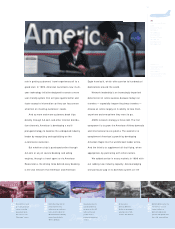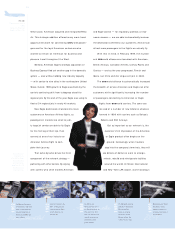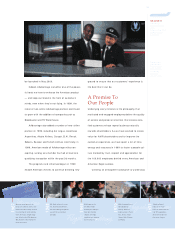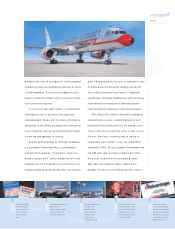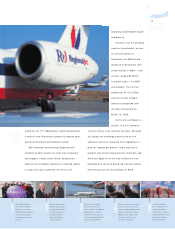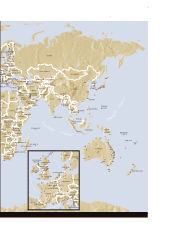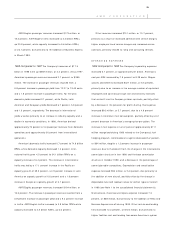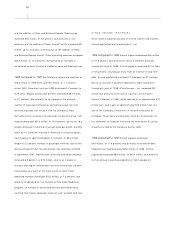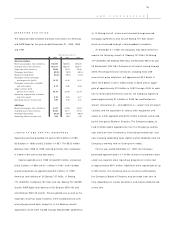American Airlines 1999 Annual Report Download - page 22
Download and view the complete annual report
Please find page 22 of the 1999 American Airlines annual report below. You can navigate through the pages in the report by either clicking on the pages listed below, or by using the keyword search tool below to find specific information within the annual report.
For 1999 as a whole, the pre-tax margin for
American and American Eagle combined fell from
1998’s 10.3 percent to 5.5 percent.
Both American and American Eagle have bal-
anced their need to grow with the reality that grow-
ing too quickly can upset the industry’s supply and
demand equilibrium. For example, both American’s
acquisition of Reno Air and Eagle’s purchase of
Business Express enabled the company to expand its
airline network into many important markets without
increasing overall industry capacity.
And the company intends to grow airline opera-
tions only as much as market conditions justify —
about two to four percent annually during the next
few years. While that growth may seem modest
when combined with aircraft replacements, it trans-
lates into about $5.6 billion in new aircraft.
In 1999, American introduced two new fleet
types, the Boeing 777 and the Boeing 737, both of
which have been very popular with customers.
American’s aircraft agreement with Boeing gives it the
flexibility to ramp up its growth if market conditions
warrant. Alternatively, should the growth in travel
demand slow, American can accelerate the retirement
of some of its older aircraft — replacing older aircraft
with new — while leaving total capacity unchanged.
American announced in 1999 that it would
accelerate the retirement of its entire fleet of DC-10
aircraft (eight at year’s end) to the end of 2000, and
the entire 727 fleet (68 at year’s end) to the end of
2003. American also decided to retire three addi-
tional 727s in early 2000, prior to scheduled heavy
maintenance checks.
In the Cargo Division, freight traffic grew 7.3
percent with the deployment of the Boeing 777 on
key international routes. Throughout 1999, several
all-time volume records were established as capacity
growth began matching shipper demand. Most
notably, we loaded 93,130 pounds of cargo on a
777 training flight from Dallas/Fort Worth to
London Gatwick, breaking Boeing’s individual load
20
ATR 42
Manufacturer:
Aerospatiale (France)
Number in Fleet: 32
Number of Seats: 46
1992
1993
1994
1995
1996
The Alliance Maintenance
and Engineering Base, the
U.S. industry’s first new
airline maintenance facility
in more than 20 years,
opens near Fort Worth.
During a national recession,
American undertakes a
Transition Plan to pare
inefficient aircraft and
unprofitable routes. The
American Airlines C.R. Smith
Museum, a tribute to the
man and the airline, opens.
American Airlines Cargo
celebrates the 50th anniversary
of scheduled air cargo
service in the United States.
Operations in Raleigh/Durham
and Nashville are scaled back and
resources are shifted to more pro-
ductive hubs. American regains
top ranking in a national airline
quality survey by the National
Institute for Aviation Research.
American and British Airways
executives announce a bold
marketing agreement, which
competitors mobilize to fight.
American is invest -
ing billions of
dollars to enlarge,
refresh, rebuild
and reinvigorate
terminal facilities
around the world,
as shown here in
this rendering of
the new Miami
terminal.



